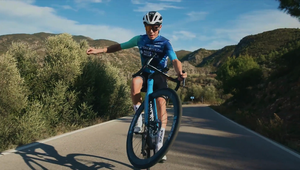
Rediscovering the Lost Art of the Design Ethos: 4 Brands That Remind Us Why It’s Vital

Design is not just what it looks like and feels like. Design is how it works.
Steve Jobs said this 20 years ago when thinking about Apple’s much-lauded take on brand and approach to design. But today his words resonate more than ever - not just with designers but with all business leaders who are looking to shape their organisation.
As Awards season judging hots up, we’ve been asking ourselves what guides a brand towards long-term success, giving it meaning and staying power, not just making it look a bit cooler for an awards entry.
Rather than rulebooks and guardrails that sometimes serve to police a brand within an inch of its life, can we all knock down some of the boundaries to help a brand flourish and thrive?
We began by looking backwards - and soon realised that some of the greatest, most enduring leaders we admire have something in common: an ethos at the heart of everything they do.
Be Water, My Friend
Surprisingly, it wasn’t Google or Apple who gave us that lightbulb moment, it was Bruce Lee. Next year marks 50 years since his tragic death, but he remains a cultural icon. In 2020, Lee’s daughter Shannon wrote the bestselling book Be Water, My Friend, with each chapter offering a lesson from Bruce Lee, expanding on the foundation of his iconic 'be water' ethos (advocating flexibility in body and mind) to reveal a path to an enlightened way of being.
This reminded us of something many have forgotten: how a design ethos shapes a brand’s entire experience. Somewhere along the way, the term fell out of fashion, perhaps down to so much competing terminology, or maybe it’s because ‘ethos’ sounds too high-minded or too deep.
Less But Better
Taking an icon from a different arena, Dieter Rams was Braun’s head of design for over 30 years, and one of Germany’s and the world’s best known industrial designers, creating products famous for timelessness, functionality and aesthetic purity.
Rams and Braun have since influenced countless modern designs, not least the Apple iPod. And Rams’ Ten Principles for Good Design is still held up as a powerful philosophy today.
The ‘Less but better’ ethos espouses the idea that design is best when not getting in the way, presenting ‘as little design as possible’. It is still influential today because it applies just as much to digital design as it does to industrial design.
A design ethos is not just about logos and colours, it’s about having thought and meaning at the core of what you’re doing, and making sure that ripples out across the whole experience of a brand.
Beauty In Simplicity
While Apple is arguably one of the most famous disciples of the Braun ethos, it is, of course, ground-breaking in its own right.
As the Smithsonian reminds us, Apple’s guiding tenet was “...not merely the shallow simplicity that comes from an uncluttered look and feel and surface of a product, but the deep simplicity that comes from knowing the essence of every product, the complexities of its engineering and the function of every component”.
As Jobs himself put it: “It takes a lot of hard work to make something simple, to truly understand the underlying challenges and come up with elegant solutions.”
This ‘beauty in simplicity’ ethos is instilled in every employee and is core to the ideas behind Apple’s own University, where it can be studied and brought to life, long after Jobs’ death. It underpins one of the world’s most joined up experiences, across spaces for work and play, hardware and software.
Better Is Temporary
At Nike, the desire to be the best is a journey, not a destination - better is temporary. Indeed, that was the name of Nike’s landmark publication, charting its transformation from rebellious upstart to global phenomenon. It’s an exploration into Nike's ethos-driven design formula, intended to serve as a manual of innovation and inspiration for generations to come.
‘Better is temporary’ is what drives its innovation: you see it in products, packaging, stores, events and even its tagline. It’s an ethos that can be lived every day, by every part of the business, whether a graphic designer, shoe designer or marketer.
3 reasons why a Design Ethos matters now
Firstly, design is about more than looking good; it’s creating an experience and guiding how a brand functions. To paraphrase Jobs once more, it’s not about the veneer of how it looks, it’s about how it feels and works.
Second, there’s the fact that every element of a company is designed, from its culture and environments to its teams and meetings, whether consciously or not. When so much of a company and brand is designed, beyond its logos, you start to realise this isn’t the sole domain for the pixel pushers. Because if you’re not designing your company as a leader, what are you doing?
And third, an ethos acts as a great bridge - between strategy and design, between function and feeling, between a company’s core purpose and people’s frontline experience. It’s something that can help every leader, strategist and creative shape how a company feels.
Rules are made to be broken. Rediscovering, or even identifying, your design ethos sets up your whole organisation. It clarifies what all facets of the brand mean to you. And it helps teams to create with a shared mindset, not just police each other’s layouts.













